 Coastal Submersibles: Giovanni Bausan, Marcantonio Colonna, Des Geneys, Vettor Pisani (1926-29)
Coastal Submersibles: Giovanni Bausan, Marcantonio Colonna, Des Geneys, Vettor Pisani (1926-29)WW2 Italian Submarines
Balilla class (1927) | Ettore Fieramosca (1929) | Archimede class (1933) | Glauco class (1935) | Pietro Micca (1935) | Calvi class (1935) | Foca class (1937) | Marcello class (1938) | Brin class (1939) | Liuzzi class (1939) | Marconi class (1940) | Cagni class (1940) | Romolo class (1943)Mameli class (1926) | Pisani class (1928) | Bandiera class (1929) | Squalo class (1930) | Bragadin class (1929) | Settembrini class (1930) | Argonauta class (1931) | Sirena class (1933) | Argo class (1936) | Perla class (1936) | Adua class (1936) | Acciaio class (1941) | Flutto class (1942)
CM class (1943) | CC class (Laid down) | CA class (1942) | CB class (1942)
The Pisani-class submarines were built for the Regia Marina as a parallel development to the Mameli class, a new start for the Interwar Italian submarine arm. Four were built for this design by the Cantiere Navale Triestino, with a single hull but generally features also seen on the Mameli class. They were completed and commissioned in 1929 and played a minor role in the Spanish Civil War of 1936–1939 supporting the Spanish Nationalists. Not very successful, in WW2 they made a few combat sorties against the French and British fleets (12 for Colonna) and were later used as training boats in pola until considered obsolete. Bausan became an oil barge in April 1942 and Des Geneys a battery charging hulk, Colonna was scrapped outright in 1943 and Pisani in 1946.
Design of the class
The Pisani were essentially a parallel development to the Mameli with the same basic admiralty specifications, double hull design of circa 800 tonnes for the designed for the mediterranean and operate from Italian colonies. The main requirement was range and thus, they were amde larger to accommodate more fuel. It was bbelieved they would have a greater top speed at 17.8 knots surfaced and 30% extra range. Underwater range was 108 nm at 4 knots as specified.
The Vettor Pisani were coastal submarines (“sommergibili costieri” or “da piccola crociera”) designed by naval engineers colonel Curio Bernardis in collaboration with major Rodolfo Tito Tizzoli. the first pair were laid down by late 1925 and two more early 1926 at the CRDA shipyards, Monfalcone. They were the first submarines ever built for the Regia Marina at CRDA, later the main construction company for submarines in the Second World War. The Vettor Pisani had limited goals, but still needed to dive deeper than WWI generations, and had a better range. However their sea trials highlighted grave transverse stability issues, corrected with the addition of lateral counter-hulls traded for a speed loss of two knotssurfaced, one knot submerged.
Hull and general design

The Vettor Pisani were single-hulled unlike the Mamelis, considered rather successful, and instead had an internal double bottom, 68.2 meters long overall, and 6 meters wide, then 6.8 after the application of the bulges for a 4.9 meters draft, and the steel used was string enough for maximum test depth achievable or 100 meters (500 ft).
The final design saw them displacing 880 metric tons (866 long tons) surfaced, 1,057 metric tons (1,040 long tons) submerged, so significantly more than the Mamelis (823t/1,009t). They were also 4 meters longer at 68.2 meters (223 ft 9 in) overall, but narrower at 6.09 meters (20 ft) versus 6.51 m (21 ft 4 in) but draftier at 4.93 meters (16 ft 2 in) instead of 4.3 m (14 ft 1 in). Theuir double hull and steel construction allowed them an operational diving depth of 90 meters (300 ft), like the Mamelis. This was the strong point of the design, alongside range. The crew ammounted to 48 (5 officers and 44 petty officers and sailors) and armament was modelled after the Mamelis.
Powerplant
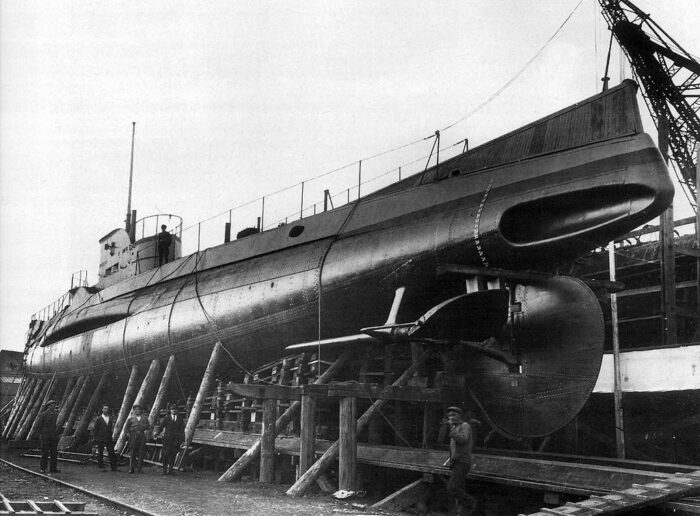
The tail of Des Geneys while in construction at CNT.
The propulsion system was conventionally diesel-electric, with two Tosi diesel engines for surface, rated for 2,700 hp (others sources 3,000 bhp), and two electric motors rated for 1,100 hp.
When surfaced, the Pisanis had two 1,500-brake-horsepower (1,119 kW) Tosi diesels (3000 shp total) connected to their own propeller shaft. As they submerged the diesels were decoupled and a pair of 550-horsepower (410 kW) CGE electric motors (1300 hp total) took over for propulsion. Like the Mamelis unfortunately, stability was poor. Later extra bulges modified their outer hull post-completion, porting the beam to a few inches. This also reduced top speed from 17.25 knots (31.95 km/h; 19.85 mph) surfaced, 8.75 knots (16.21 km/h; 10.07 mph) underwater to 15 knots (28 km/h; 17 mph) and 8.2 knots (15.2 km/h; 9.4 mph). Range while surfaced was 5,000 nautical miles (9,300 km; 5,800 mi) at 8 knots (15 km/h; 9.2 mph) down to 70 nmi (130 km; 81 mi) submerged at 4 knots (7.4 km/h; 4.6 mph). To compare, the Mameli class did less while surfaced 4,360 nmi (8,070 km; 5,020 mi) at 8 knots but submerged 110 nmi at 3 knots, which was comparable. Another source gives 4,200 miles surfaced at 9 knots.
Armament
There, the two classes mirrored each others with the same composition: A single 102 mm (4 in) deck gun, two single 13.2 mm (0.52 in) heavy AA machine guns in the conning tower, and six 533 mm (21 in) torpedo tubes including four in the bow, and two defensive in the stern. The ones in the stern were likely not reloadable. They carried a total of nine torpedoes, less the six already preloaded in the tubes, leaving only three spares.
Main: 102mm/35 Schneider-Ansaldo Modello 1914
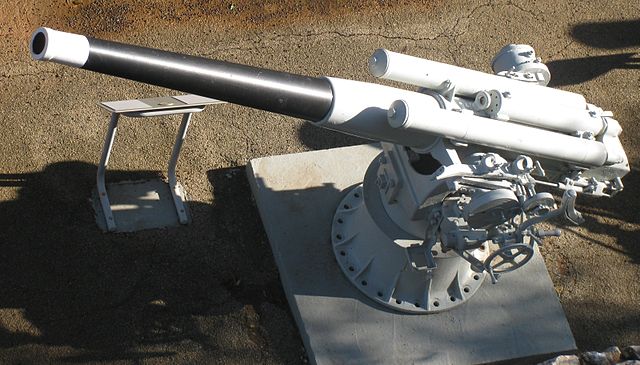
The 102/35 Schneider-Ansaldo Modello 1914 Entered service in 1917. It was developed by Ansaldo and Schneider in France, based on the British QF 4 Mk. V. It was already used in the First World War on some Italian submarines.
It armed (as secondary) the Mirabello, Rosolino Pilo, Sirtori, Insidioso and Audace class destroyers, armed Yacht Diana, seaplane carrier Giuseppe Miraglia thesubmarine classes Mameli, Vettor Pisani, Bragadin, Squalo, Bandiera, Argonauta and Settembrini. So a lot of ammunitions was manufactured and stockpiled. The 102mm/35 remained in service until the end of the Second World War with some 110 in service. Many were also used by the Royal Army, Territorial anti-aircraft defence Militia, Maritime Militia and border guard and on two Poz type railway wagons (Regia Marina armoured trains). In 1941 Fiat plant in Tripoli placed seven 102mm/35 cannon on Fiat 634N trucks used by the Regia Marina, taken from the defenses of Benghazi, creating two mobile batteries served by Maritime Militia personnel with extra vehicles armed with 76mm/30 naval guns on the same 634N chassis. They served with the Armored Division “Ariete”, and Motorized Division “Trento”.
Three models were produced, the Schneider-Ansaldo Mod. 1914, Schneider-Ansaldo-Vickers Mod. 1914-1915, Vickers-Terni Mod. 1925 and OTO Modello 1933.
⚙ specifications 102mm/35 Schneider-Ansaldo Modello 1914 |
|
| Weight | 1 220 kg |
| Barrel lenght | 3,733 mm, constant right-handed rifling, 32 lines |
| Elevation/Traverse | -5° to +45°, 300 |
| Loading system | Horizontal or Vertical sliding breech block |
| Muzzle velocity | 750 m/s |
| Range | 11,700 m |
| Guidance | Visual, sight |
| Crew | |
| Round | 101.6 mm HE and AP unitary 13.74-16 kg |
| Rate of Fire | 7 rpm |
AA: 2x Breda Modello 31
 Designer: Hotchkiss, Design date: 1929. Builder: Ernesto Breda for Mechanical Constructions; from 1931 onwards.
Designer: Hotchkiss, Design date: 1929. Builder: Ernesto Breda for Mechanical Constructions; from 1931 onwards.
Adapted design from Hotchkiss also used by the French Navy and Army, itself derived from the 1914 Hotchkiss air cooled LMG.
533 mm torpedoes
Model unknown but since the new models appeared in 1935, by the time the Mameli class was completed they had WWI models, from Silurificio Whitehead di Fiume. It was likely of the common A140/450 built by Silurificio Italia after 1920: 29-32 knots, 6,000-4,000 m range settings, 1,140 Kgs, TNT warhead 140 kg, air tank loaded to 170 atmospheres. It was however quite visible due to the comperssed air bubble trail, especially in calm waters.
Overall, these Coastal attack boats did not prove to be a particularly successful design and faced rapid obsolescence. As the Second World War started they had been already withdrawn from front line service, used for training duties with three decommissioned in 1942, last one was in 1946.
⚙ specifications |
|
| Displacement | 880 t (866 long tons) surfaced, 1,057 t (1,040 long tons) submerged |
| Dimensions | 68.8 x 6.1 x 4.93m (223 ft 9 in x 20 ft x 16 ft 2 in) |
| Propulsion | 2 shafts 1500 bhp Tosi diesels, 2x 550 shp CGE electric motors |
| Speed | 15 knots (28 km/h; 17 mph) surfaced, 8.2 knots (15.2 km/h; 9.4 mph) submerged |
| Range | 5,000 nmi/8 knots surfaced, 70 nmi/4 knots submerged |
| Armament | 1x 102 mm (4 in) deck gun, 2× 13.2 mm AA MG, 6× 533 mm TTs (4 bow, 2 stern) |
| Test depth | 90 m (300 ft) |
| Crew | 48 |
Career of the Pisani class
 Giovanni Bausan (1928)
Giovanni Bausan (1928)
Giovanni Bausan was the first built at Cantiere Navale Triestino in Trieste, laid down on 27 January 1926, launched on 24 March 1927 and completed on 15 September 1929. Named after a Neapolitan navy sailor and later captain from Gaeta (1757) she joined the Vth Medium Submarine Squadron in Naples, later receiving her battle flag in Gaeta on 14 November 1929, first commander Giovanni Marabotto. On the 2-3 May 1932 while training at night she ran aground near Punta Falcone, Bonifacio strait. She could free herself.
From 7 December 1935, under Lt. Ferruccio Ferrini, she was in the II Squadron, VI Grupsom in Leros and by January-February 1937 made a mission in the Spanish Civil War, spotted nothing to sink.
From 10 to 13 June 1940 under Lt Cdr Francesco Murzi she patrolled off Malta and on 13 June bound for Augusta, she was spotted by HMS Grampus, which torpedoed, her, but she dodged them.
From 20 to 24 June she was in ambush off Cape Kio, abbreviated after a bow depth rudders issue.
She made another sortie between 14 to 21 July between Pantelleria and Capo Bon, but again had an engine failure. In total she covered 2791 miles, 2593 surfaced, 198 submerged until joining like her sisters the Submarine School of Pola, until 8 October 1941 (90 missions). She was mothballed until 18 May 1942, decommissioned and converted into the fuel barge GR.251, stricken 18 October 1946, sold for BU.
 Marcantonio Colonna (1928)
Marcantonio Colonna (1928)
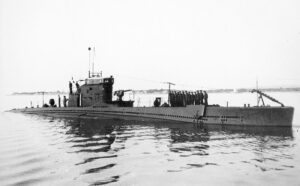 Marcantonio Colonna was the first actually laid down on 3 December 1925, but second launched on 26 December 1927 and completed on 10 July 1929. She joined the V Medium SubRon in Naples and during a test on 10 October 1929, managed to reach 109 metres. By September 1930 she started an eastern Mediterranean training cruise with her sisters. Se was homeported to La Spezia in 1935, then Leros, II Squadron, VI Grupsom. Like her sisters she made a single sortie in the Spanish Civil War.
Marcantonio Colonna was the first actually laid down on 3 December 1925, but second launched on 26 December 1927 and completed on 10 July 1929. She joined the V Medium SubRon in Naples and during a test on 10 October 1929, managed to reach 109 metres. By September 1930 she started an eastern Mediterranean training cruise with her sisters. Se was homeported to La Spezia in 1935, then Leros, II Squadron, VI Grupsom. Like her sisters she made a single sortie in the Spanish Civil War.
In 1938 she became squadron leader, III Squadron, III Grupsom in Messina. By late September 1940 under Lt. Guido Gozzi she was sent in ambush near Tobruk, and mistook off Navarino on 19 September, attacked by the Italian submarine Serpente. She dodged her torpedoes.
On 31 January 1941 she was posted off Malta, but was returned due to engine failure.
She was assigned to night defensive ambushes, Gulf of Genoa. in July 1941 she was there to prevent a British possible naval bombardment of Genoa. Operation Style was in reality the supply of Malta but was preceded by bombardment missions on Genoa as a diversion.
In total she made 12 combat sorties and six ambushes for 6,718 miles surfaced, 908 submerged making her the most active her class. On 1 June 1942 Colonna was disarmed and converted into a loading pontoon in Genoa, decommissioned on 18 October 1946, BU.
 Des Geneys (1928)
Des Geneys (1928)
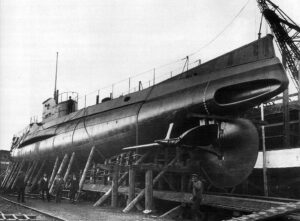 Des Geneys was laid down on 1 February 1926, launched 14 November 1928 and completed on 31 October 1929. Once completed she was outfitted in Monfalcone, under the command of the Maritime Military Command of Pola, folloed by trials and test and joining later the Vth Medium Submarine Squadron in Naples with her sisters.
Des Geneys was laid down on 1 February 1926, launched 14 November 1928 and completed on 31 October 1929. Once completed she was outfitted in Monfalcone, under the command of the Maritime Military Command of Pola, folloed by trials and test and joining later the Vth Medium Submarine Squadron in Naples with her sisters.
In 1930 under Frigate Captain Tomaso Panunzio as Flotilla leader she made a long training cruise to the eastern Mediterranean, notably stopping at Volos and Salonika. She was forced at her returned to repairs in La Spezia as one of the batteries exploded (two injured).
In 1935 she was redeployed to La Spezia, 1936 II SqunVI GrupSom Leros. By December 1937 she made a clandestine mission out of Spain looking for Republican smugglers. Her second mission was cut short by a breakdown. From 26 November to 28 December 1938 she stayed squadron leader. In 1940 she was at the XXXI SubSqn, III Grupsom in Messina but in “second line” duties.
On 17 August 1940 under Lt Cdr Antonio Cuzzaniti she patrolledsouth-east of Crete. On 3 September she spotted the British Mediterranean Fleet and manoeuvered to attack, but the formation approached directly over her after a turn and she had to crash dive, returning to base the next day.
She made three more offensive missions for 3,055 miles surfaced, 268 submerged. Assigned to the Pola Submarine School she provided 139 training missions until 28 May 1942. On 16 January 1942 she rammed the torpedo boat Rosolino Pilo in the stern while mooring.
On 28 May 1942 she was decommissioned, converted into a loading pontoon and on 9 September 1943, was scuttled in Rijeka to prevent capture.
 Vettor Pisani (1928)
Vettor Pisani (1928)
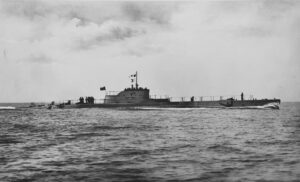 Vettor Pisani was the second laid down on 18 November 1925, but launched with delays on 24 November 1927 and completed on 16 June 1929. She was assigned to the Vth Medium Submarine Squadron in Naples together with the rest of the class later in 1929. They trained together. In 1930 they made an eastern Mediterranean training cruise and were reassigned to La Spezia in 1935 and Leros in 1936 in the aegean islands, then assigned to the II Squadron, VI Gruppo Sommergibli (GrupSom).
Vettor Pisani was the second laid down on 18 November 1925, but launched with delays on 24 November 1927 and completed on 16 June 1929. She was assigned to the Vth Medium Submarine Squadron in Naples together with the rest of the class later in 1929. They trained together. In 1930 they made an eastern Mediterranean training cruise and were reassigned to La Spezia in 1935 and Leros in 1936 in the aegean islands, then assigned to the II Squadron, VI Gruppo Sommergibli (GrupSom).
She clandestinely took part in the Spanish civil war with with a single mission, launching at some point two torpedoes against a ship suspected of smuggling arms from France to the Republicans, but missed.
In 1938 she was assigned to the XXXI Squadron, III GrupSom in Messina. When the Second World War commenced she was under command of Junio Valerio Borghese (later quite famous for the X Mas flotilla), and made only two patrol sorties, the first for ten days in June 1940 against French vessels, and the second in mid-July west of Malta against the British. She made no spotting.
She also carried out defensive ambushes along the Italian coast until late 1940, and was assigned to the Submarine School in Pola, making some 286 short training sorties in addition and a few some anti-submarine patrols. In total she made 12 patrol missions, 286 training, 9 transfer missions for a total of 4,759 miles surfaced, 286 submerged.
After the armistice, under command of Lt. Cdr. Mario Resio she was reassigned to Taranto and from October 1943 to Naples. In January 1944 she was moved to Augusta and in April, came back to Taranto, resuming training until V-Day and her decommission. Stricken on 1 February 1948, she was sold for BU.
Read More/Src
Books
Conway’s all the world’s fighting ships 1922-46
Giorgio Giorgerini, Uomini sul fondo. Storia del sommergibilismo italiano dalle origini a oggi.
rminio Bagnasco, Maurizio Brescia, I sommergibili italiani 1940-1943. 2013.
Maurizio Brescia e Sandro Bocchino, Giovanni Marabotto, in Storia Militare, n. 207, dicembre 2010.
Giorgio Giorgerini, Uomini sul fondo. Storia del sommergibilismo italiano dalle origini a oggi, Mondadori, 2002,
Links
http://www.trentoincina.it/dbsomm2.php?short_name=Pisani
https://www.marina.difesa.it/noi-siamo-la-marina/mezzi/mezzi-storici/Pagine/Smg/pisani_01.aspx
http://www.navypedia.org/ships/italy/it_ss_pisani.htm
https://web.archive.org/web/20160304201645/http://www.archeologiaindustriale.it/sez_produzione_it.php?&content_type=nave&goto_id=423
https://web.archive.org/web/20120923064953/http://www.xmasgrupsom.com/Sommergibili/Geneys/DesGeneys.html
https://www.betasom.it/forum/index.php?/topic/25776-classe-pisani-1925/#entry339150
https://web.archive.org/web/20140716002308/http://www.archeologiaindustriale.it/sez_produzione_it.php?&content_type=nave&goto_id=421
https://it.wikipedia.org/wiki/Classe_Vettor_Pisani_(sommergibile)
https://en.wikipedia.org/wiki/Pisani-class_submarine
Model Kits
None

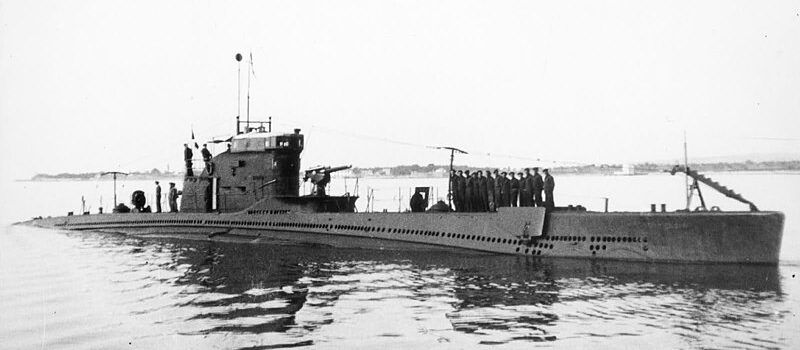
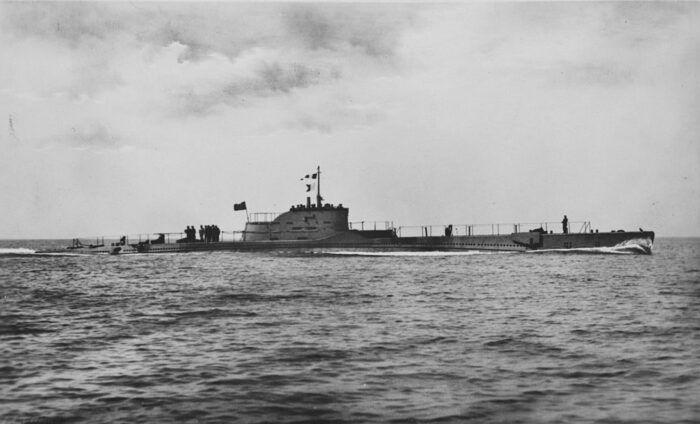

 Latest Facebook Entry -
Latest Facebook Entry -  X(Tweeter) Naval Encyclopedia's deck archive
X(Tweeter) Naval Encyclopedia's deck archive Instagram (@navalencyc)
Instagram (@navalencyc)





 French Navy
French Navy Royal Navy
Royal Navy Russian Navy
Russian Navy Armada Espanola
Armada Espanola Austrian Navy
Austrian Navy K.u.K. Kriegsmarine
K.u.K. Kriegsmarine Dansk Marine
Dansk Marine Nautiko Hellenon
Nautiko Hellenon Koninklije Marine 1870
Koninklije Marine 1870 Marinha do Brasil
Marinha do Brasil Osmanlı Donanması
Osmanlı Donanması Marina Do Peru
Marina Do Peru Marinha do Portugal
Marinha do Portugal Regia Marina 1870
Regia Marina 1870 Nihhon Kaigun 1870
Nihhon Kaigun 1870 Preußische Marine 1870
Preußische Marine 1870 Russkiy Flot 1870
Russkiy Flot 1870 Svenska marinen
Svenska marinen Søværnet
Søværnet Union Navy
Union Navy Confederate Navy
Confederate Navy Armada de Argentina
Armada de Argentina Imperial Chinese Navy
Imperial Chinese Navy Marinha do Portugal
Marinha do Portugal Mexico
Mexico Kaiserliche Marine
Kaiserliche Marine 1898 US Navy
1898 US Navy Sovietskiy Flot
Sovietskiy Flot Royal Canadian Navy
Royal Canadian Navy Royal Australian Navy
Royal Australian Navy RNZN Fleet
RNZN Fleet Chinese Navy 1937
Chinese Navy 1937 Kriegsmarine
Kriegsmarine Chilean Navy
Chilean Navy Danish Navy
Danish Navy Finnish Navy
Finnish Navy Hellenic Navy
Hellenic Navy Polish Navy
Polish Navy Romanian Navy
Romanian Navy Turkish Navy
Turkish Navy Royal Yugoslav Navy
Royal Yugoslav Navy Royal Thai Navy
Royal Thai Navy Minor Navies
Minor Navies Albania
Albania Austria
Austria Belgium
Belgium Columbia
Columbia Costa Rica
Costa Rica Cuba
Cuba Czechoslovakia
Czechoslovakia Dominican Republic
Dominican Republic Haiti
Haiti Hungary
Hungary Honduras
Honduras Estonia
Estonia Iceland
Iceland Eire
Eire Equador
Equador Iran
Iran Iraq
Iraq Latvia
Latvia Liberia
Liberia Lithuania
Lithuania Mandchukuo
Mandchukuo Morocco
Morocco Nicaragua
Nicaragua Persia
Persia San Salvador
San Salvador Sarawak
Sarawak Uruguay
Uruguay Venezuela
Venezuela Zanzibar
Zanzibar Warsaw Pact Navies
Warsaw Pact Navies Bulgaria
Bulgaria Hungary
Hungary

 Bundesmarine
Bundesmarine Dutch Navy
Dutch Navy Hellenic Navy
Hellenic Navy Marina Militare
Marina Militare Yugoslav Navy
Yugoslav Navy Chinese Navy
Chinese Navy Indian Navy
Indian Navy Indonesian Navy
Indonesian Navy JMSDF
JMSDF North Korean Navy
North Korean Navy Pakistani Navy
Pakistani Navy Philippines Navy
Philippines Navy ROKN
ROKN Rep. of Singapore Navy
Rep. of Singapore Navy Taiwanese Navy
Taiwanese Navy IDF Navy
IDF Navy Saudi Navy
Saudi Navy Royal New Zealand Navy
Royal New Zealand Navy Egyptian Navy
Egyptian Navy South African Navy
South African Navy






























 Ukrainian Navy
Ukrainian Navy dbodesign
dbodesign